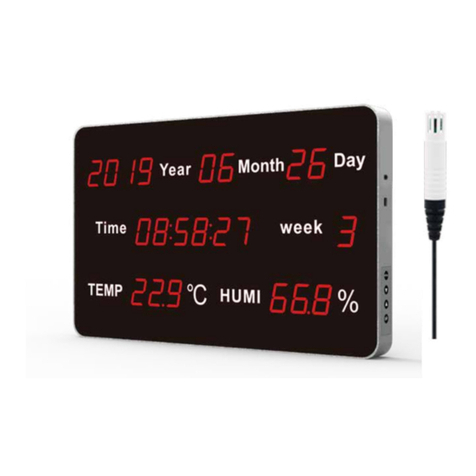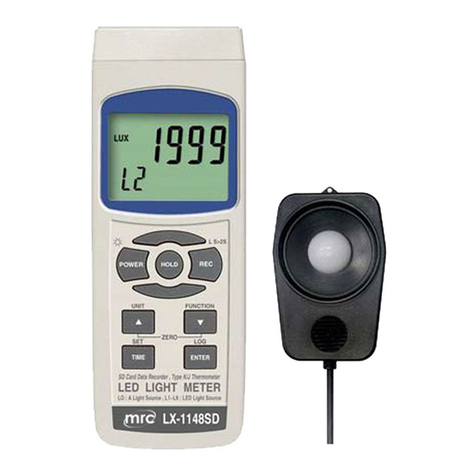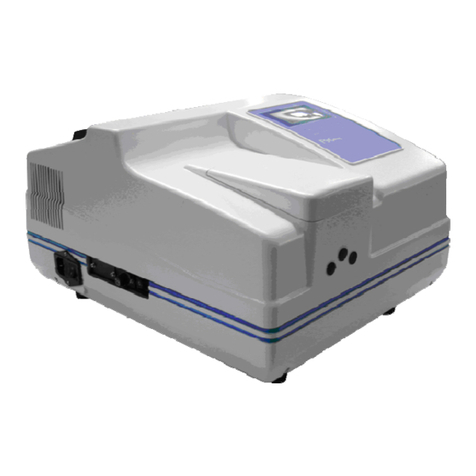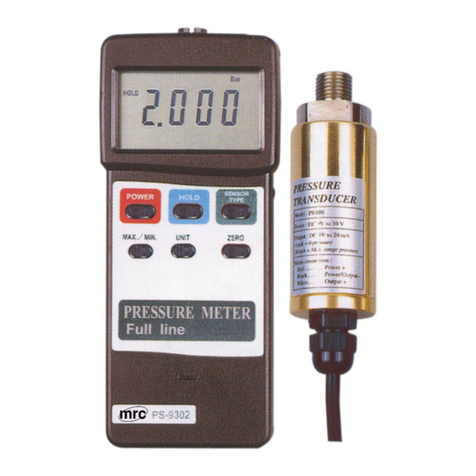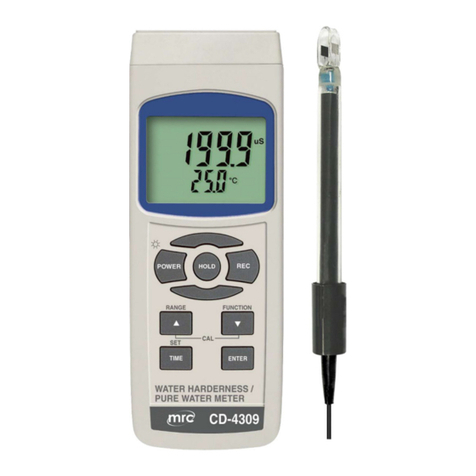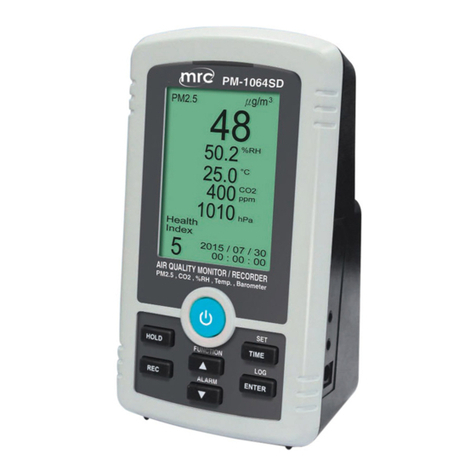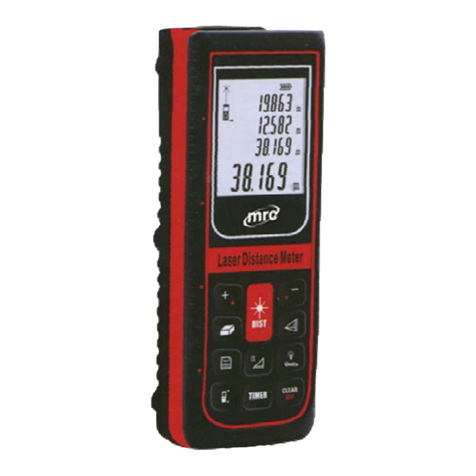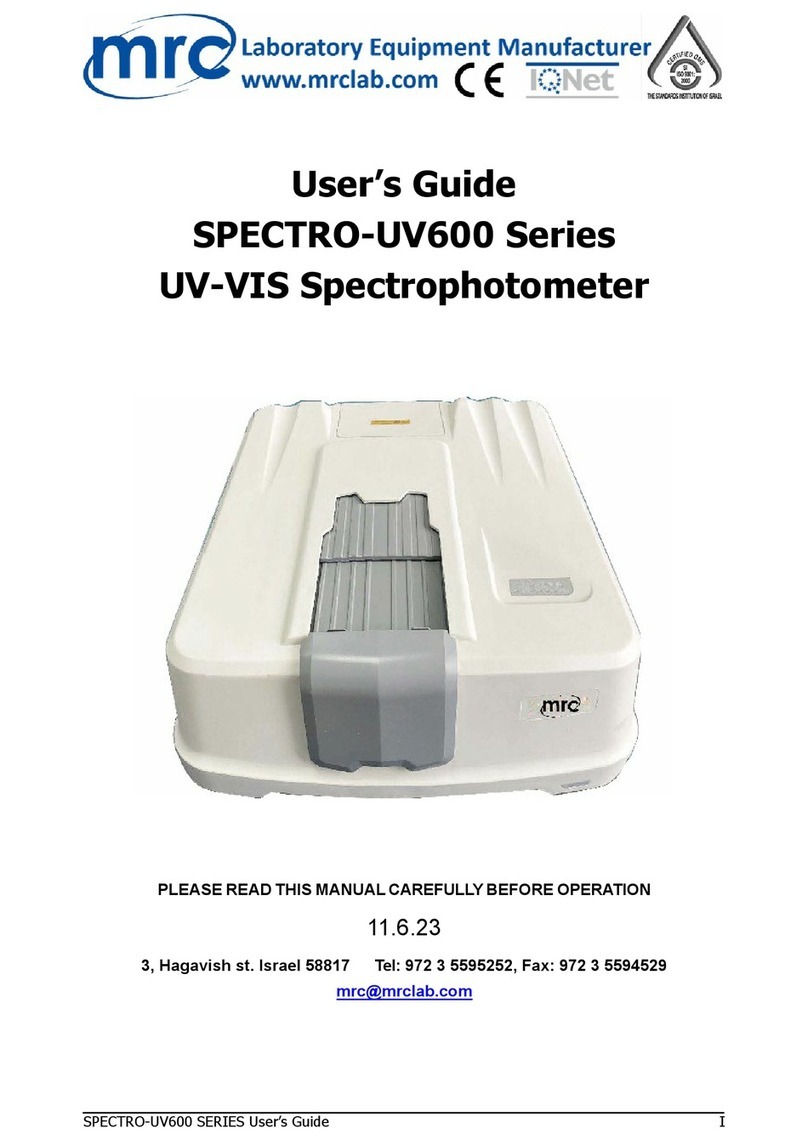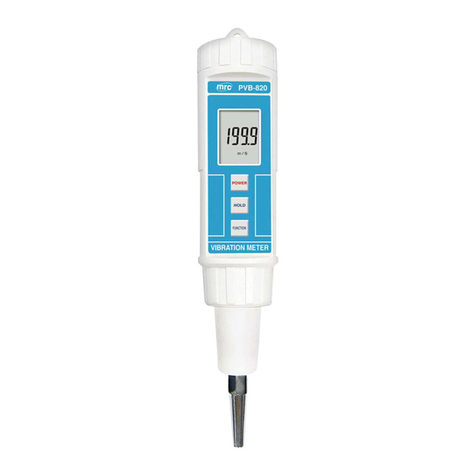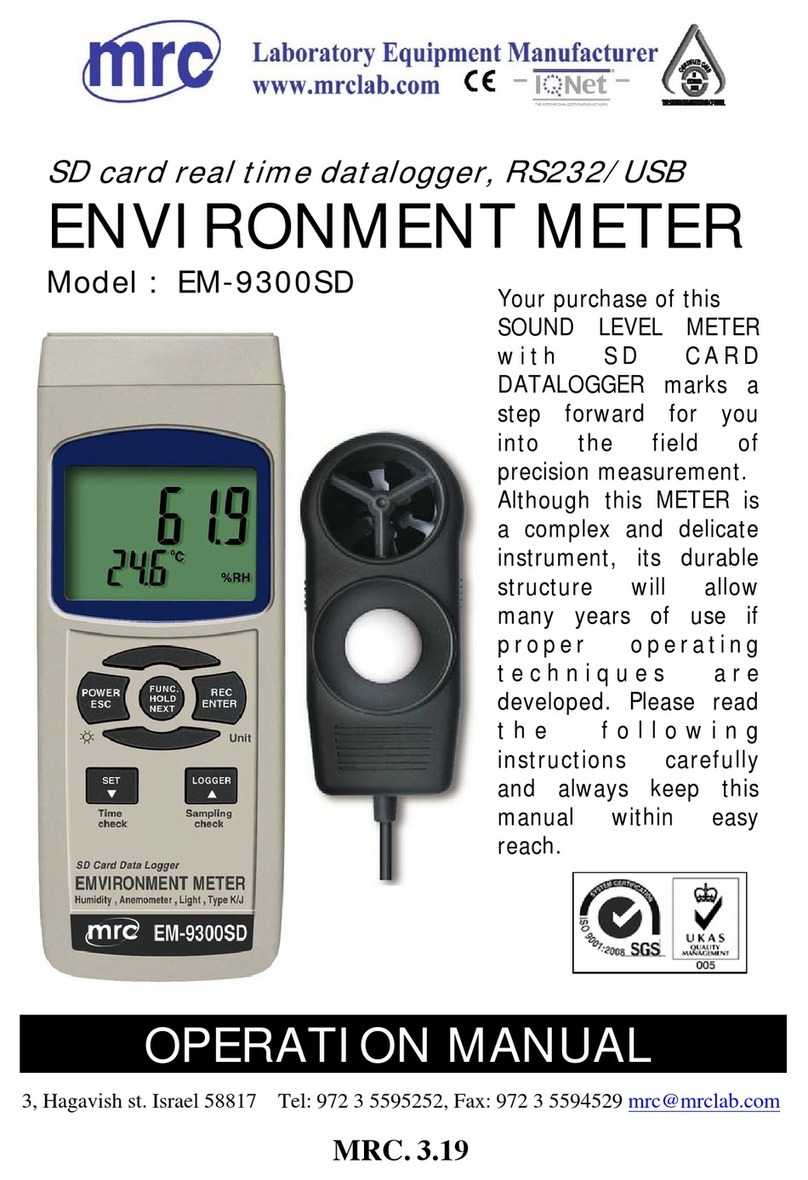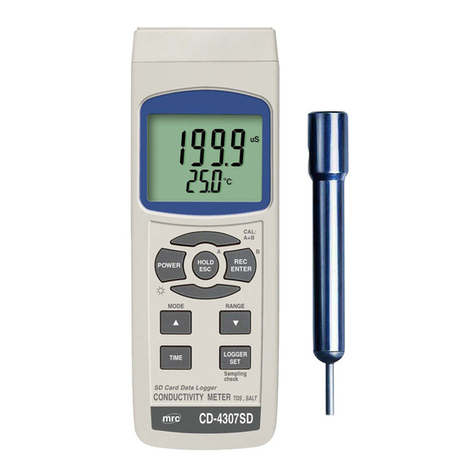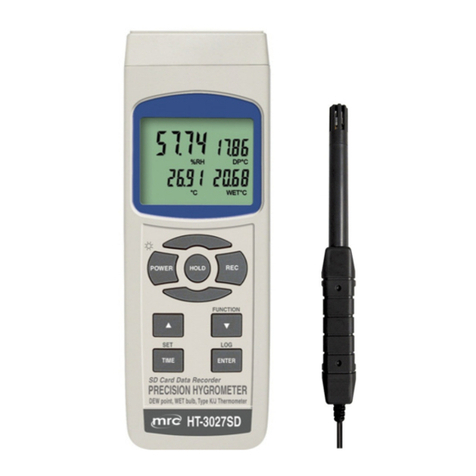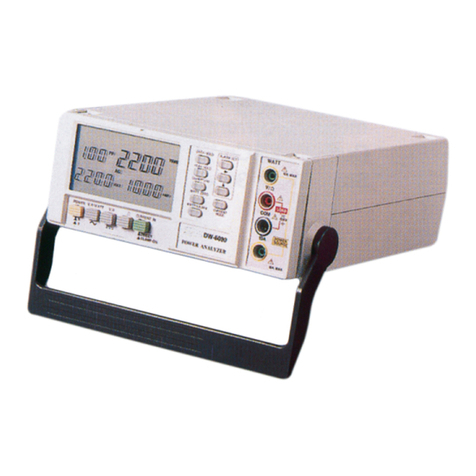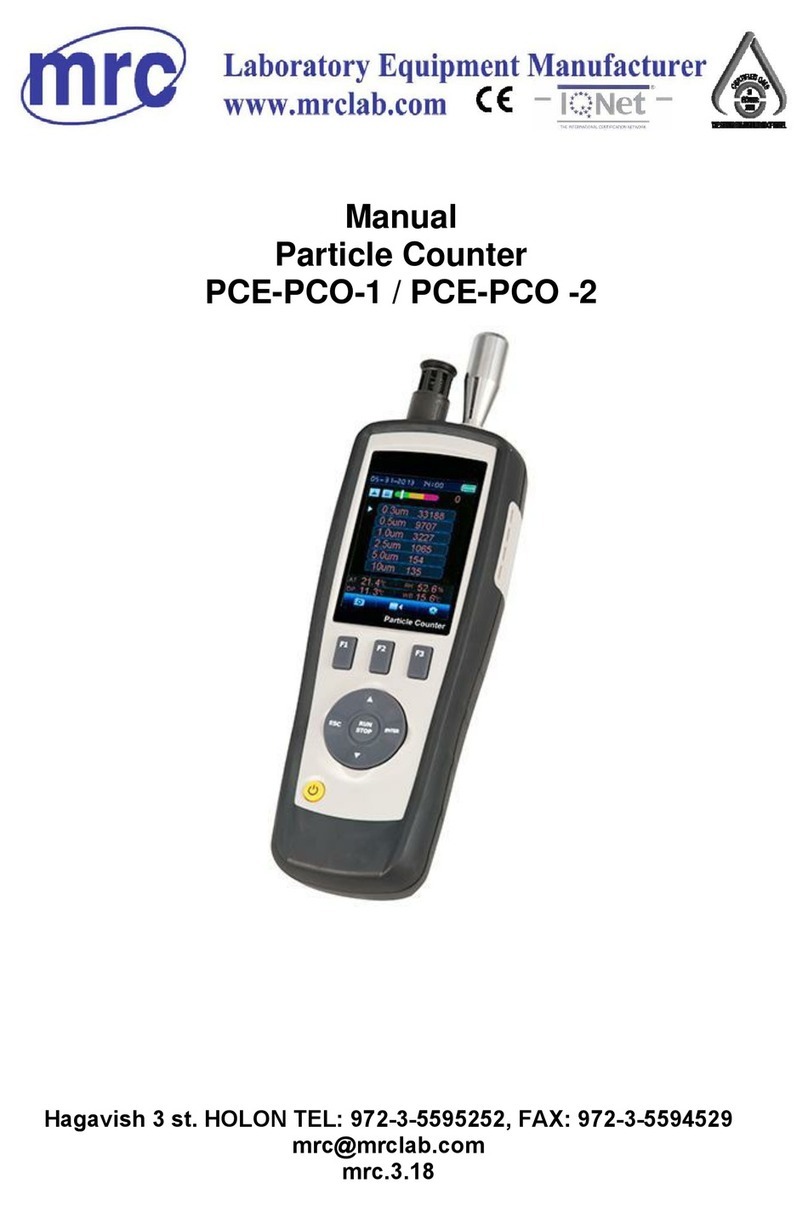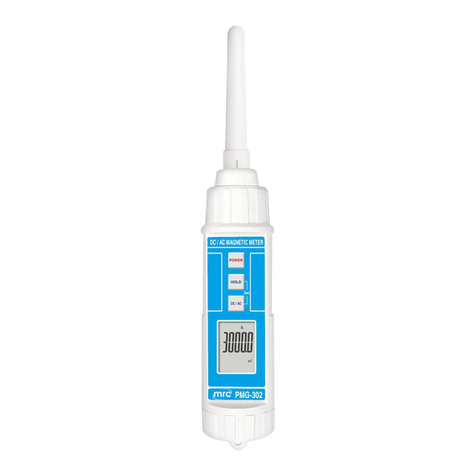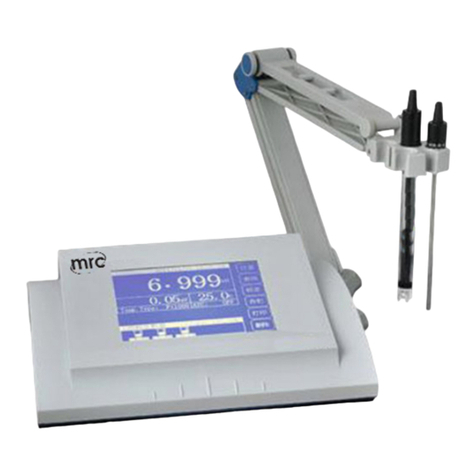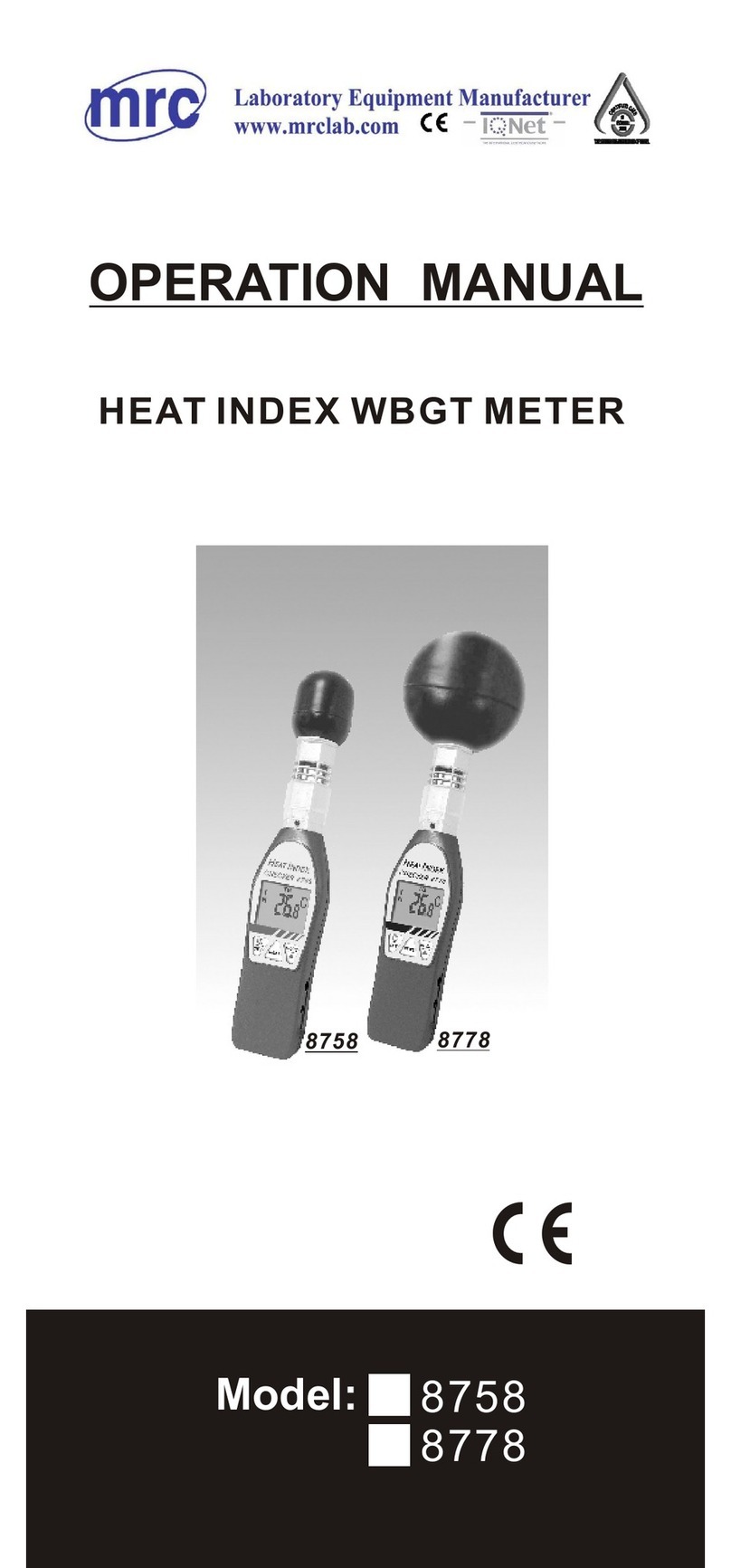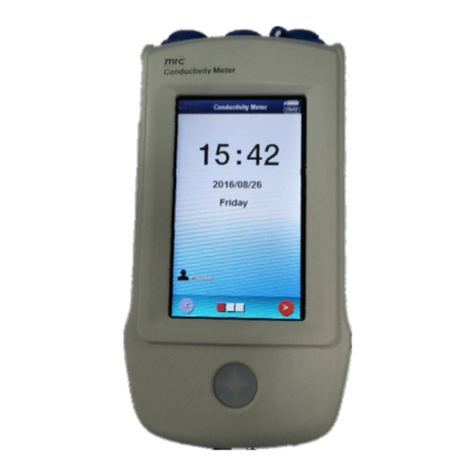
Display of over range will appear on the screen when the current rotary speed and current
spindle measuring range are exceeded, while a warning beep will be emitted. When the torque
exceeds 100%,the readings of percentage, viscosity, shear rate, shearing stress will all be EEEE.
9. Measurement of sample with unknown viscosity
(1)General principles of measurement: select small spindle (No. 3 and 4) and low rotary speed for
high viscosity samples and large spindle (No. 1 and 2) and high rotary speed for high viscosity
samples. For each measured percentage scale (torque ), normal values are those fall in the range
between 10%-90%, and the viscosity value measured within this range is valid.
(2) Estimate the approximate viscosity range of tested samples first, then select a small spindle
and a low rotary speed for high viscosity samples, and select a large spindle and a rapid rotary
speed for low viscosity samples. The selection of a spindle usually precede that of an appropriate
rotary speed. For example, when the spindle SP is No. 1 and the rotary speed is 60 RPM, the full
range of 100mPa.s will be displayed on the screen immediately; when the rotary speed is adjusted
to 6 RPM, the full range will be 1000mPa.s.
(3) If the viscosity of the tested sample can not be estimated, it shall be set to higher viscosity. Try
spindles from small to large and rotary speeds from low to high. Then, the rationality of the
spindle and the rotary speed selection will be determined according to the percent scale (torque)
for each measurement. The percent scale must be within the normal range of 10%-90%, and a
failure to fall into such range will trigger a warning of the viscometer to remind user to change
rotary speed and spindle. Be sure that the spindle No. “SP” has been modified according to the
selected spindle after the spindle is replaced.
10. Precautions
(1) Give special attention in spindle attaching and dismounting. The spindle shall be attached or
dismounted with the coupling screw lifted slightly. Do not apply excess force. The spindle shall
not be subjected to transverse stress to avoid the bending of the spindle.
(2) Please do not place a viscometer on the side or upside down.
(3) The coupling face between the screw and the spindle, as well as the thread shall be kept clean;
otherwise the vibration of the spindle will be affected.
(4) Hold the viscometer in hand when move it up or down, to prevent the viscometer from
dropping under the gravity.
(5) Input the new spindle code in time after the spindle has been replaced. The replaced spindle
shall be cleaned ( wipe up) in time and be put back into the spindle bracket. Do not carry out
cleaning with the spindle left in the instrument.
(6) Please clean the spindle and the protecting frame in time when the tested fluid is replaced, to
avoid the measurement error resulted from the mixed fluids.
(7) Any spindle is exclusive for a given instrument, do not confuse the spindles of several
instruments.
(8) Do not disassemble and adjust instrument parts wantonly.
(9) The instrument shall be handled and transported in the packing container with the yellow cap
on the coupling screw and the screw tightened.
(10) Do not leave the instrument running for a long time without liquid after the spindle is
attached, to avoid the damage of the tip.












